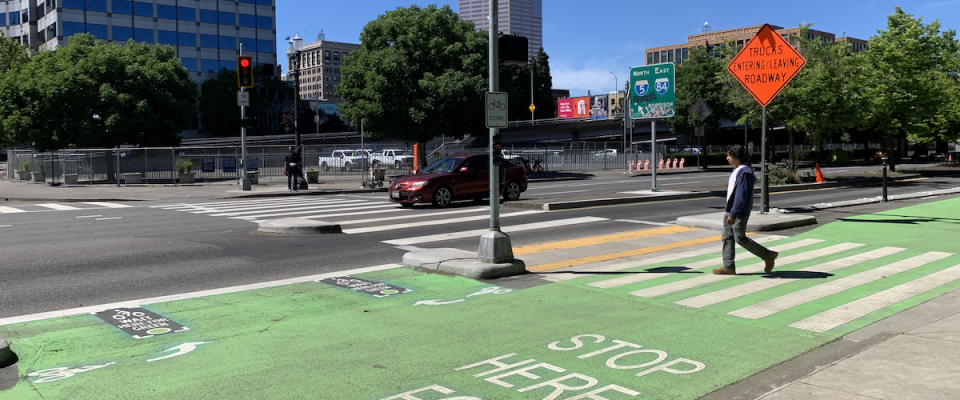Looking Back at a Decade of NITC Research in Walking and Bicycling

In 2021 we embarked on creating NITC Research Roadmaps across six core transportation areas of our work, each aimed at identifying key gaps to guide the future direction of research and workforce development initiatives. But to look forward, we had to look back first. This summer, we're be releasing literature reviews of a decade of NITC research in key topic areas. We started with Transportation and Land Use, and now we're moving on to the next theme: Walking and Bicycling.
Walking and bicycling are foundational transportation modes. Understanding how to expand the benefits of these active transportation modes, while reducing current safety deficiencies, is an essential task for research seeking to improve both transportation and its connection to larger environmental, economic, and social goals.
Nathan McNeil of Portland State University, Shuchisnigdha Deb of the University of Texas at Arlington, Maia Ingram of the University of Arizona, Roger Lindgren of the Oregon Institute of Technology, and Marc Schlossberg of the University of Oregon have written an overview of NITC research in this area over the past decade. Download the full literature review of NITC research in walking and biking here, or you can download our two-page walking and biking summary (PDF) here.
The National Institute for Transportation and Communities (NITC) is one of seven U.S. Department of Transportation national university transportation centers. NITC is a program of the Transportation Research and Education Center (TREC) at Portland State University. This PSU-led research partnership also includes the Oregon Institute of Technology, University of Arizona, University of Oregon, University of Texas at Arlington and University of Utah. We pursue our theme — improving mobility of people and goods to build strong communities — through research, education and technology transfer.
